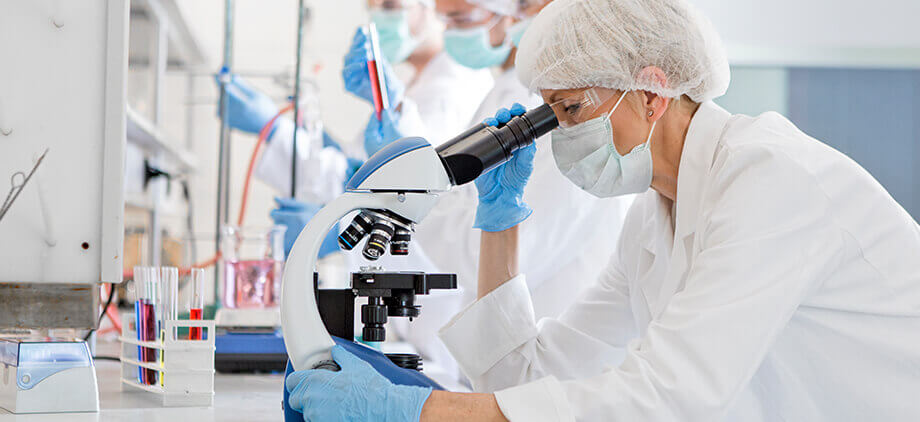Stability & Shelf Life Testing
Stability tests are designed to test and provide evidence regarding the variation in product quality over time and under the influence of various environmental factors. Factors include temperature, humidity and light, along with other elements related to the product itself, such as physical properties and chemicals.
The stability tests provide indications about the product’s behavior in a certain period of time and in view of the environmental conditions to which it may be subjected from the manufacturer to the end of its validity.
Specific tests include:
- ICH Q1A Accelerated Testing (40°C, 75% RH)
- ICH Q1A Intermediate Testing (30°C, 60% and 65% RH)
- ICH Q1A Long-term Testing (25°C, 65% RH or 30°C, 65% RH)
- ICH Q1A Refrigerated Product Testing (5°C or 25°C, 60% RH)
- ICH Q1B & VICH GL5 Photostability testing
- ASEAN/WHO stability testing (30°C, 75%RH, or 40°C, 75%RH)
|
Temperature and Humidity Conditions |
Purpose |
|
|
ICH Q1A Accelerated Testing |
40°C, 75% RH |
Predicts long-term stability of drug product in a short period of time (up to 6 months) |
|
ICH Q1A Intermediate Testing |
30°C, 60% RH or 65% RH |
Determines the stability of the drug product under conditions between accelerated and long-term testing |
|
ICH Q1A Long-term Testing |
25°C, 65% RH or 30°C, 65% RH |
Determines the stability of the drug product over a long period of time (up to 24 months or more) |
|
ICH Q1A Refrigerated Product Testing |
5°C or 25°C, 60% RH |
Determines the stability of the drug product when stored under refrigerated conditions |
|
ICH Q1B & VICH GL5 Photostability Testing |
Exposure to light at varying wavelengths |
Determines the potential for degradation due to exposure to light |
|
ASEAN/WHO Stability Testing |
30°C, 75%RH, or 40°C, 75%RH |
Determines the stability of the drug product in specific climatic zones and storage conditions |
5 Types of Stability for Products
Stability testing is an essential part of the drug development process, which involves evaluating a drug product’s chemical and physical properties to ensure its safety and efficacy. During stability testing, several types of stability are generally recognized.
- Chemical stability: This refers to the ability of a drug product to maintain its chemical integrity and purity over time. Chemical stability is usually assessed by monitoring the degradation of the active pharmaceutical ingredient (API) and the formation of degradation products.
- Physical stability: This refers to the ability of a drug product to maintain its physical properties over time, such as its appearance, particle size and viscosity. Physical stability is usually assessed by monitoring changes in the appearance and physical properties of the drug product.
- Microbiological stability: This refers to the ability of a drug product to maintain its microbiological purity over time. Microbiological stability is usually assessed by monitoring the growth of microorganisms in the drug product.
- Packaging stability: This refers to the ability of a drug product to maintain its stability when stored in the packaging material used for its distribution. Packaging stability is usually assessed by monitoring changes in the drug product's stability under different packaging conditions.
- Storage stability: This refers to the ability of a drug product to maintain its stability under different storage conditions, such as temperature, humidity and light exposure. Storage stability is usually assessed by monitoring changes in the drug product's stability over time under different storage conditions.

To assure consistent and meaningful results, chambers used for stability tests need to feature tight parameter control, uniformity and stability over long periods of time. Depending on the test, parameters may include sub-ambient or elevated temperature, elevated humidity and light.
Memmert's HPPeco and ICH Climatic Chambers are ideal for carrying out the most varied studies under controlled conditions as per ICH Q1A, ICH Q1B and WHO.
Specialized Lab Equipment
Choose sizing, accessories & specifications
We can have accessories and a variety of options available to get the Memmert products you need to complete any job. Options include interior size, voltage & more.
SingleDISPLAY
This simple and intuitive interface allows you to seamlessly control all aspects of your equipment. Perfect for standard applications but still offers reliability and precision consistent with any Memmert equipment.
TwinDISPLAY
The more complex twin display allows users to control every aspect of equipment functionality. Even complex processes such as multiple overtemperature protection, visual and acoustic alarm as well as automated alarm messages can be programmed quickly and easily.
![]()
AtmoCONTROL
All Generation 2012 equipment uses an Ethernet interface for remote access & control of Memmert products. You can monitor & alter your experiments no matter where you are. Our technology also activates User-ID functions to prevent unauthorized access or manipulation of your equipment.
